The Role of Geographical Landscape Studies for Sustainable Territorial Planning
Abstract
1. Introduction
- Geomorphic landscape maps based on landforms
- Geosystemic landscape maps
- Landscape Character Assessment
- Landscape studies based on visual landscape units
- Landscape assessment with image pairs
1.1. Environmental Geography and Sustainable Territorial Planning
1.2. Sustainable Territorial Planning and the Geographic Landscape
- the territorial structure, based on integrating components (the physical environment, the population, its productive activities, the population centres, the relational channels, institutions, and the legal framework that establishes the rules);
- the function, established by the relations of the system with the external (territorial levels) and the internal relations (the relation with the physical environment, the settlement model) by flows circulating through the relational channels making a functional system;
2. Landscape-Mapping Methods
2.1. Maps of Geomorphological Landscapes Based on Landforms
Method
2.2. Geosystemic Landscape Maps
Method
- (1)
- Elaboration of relief types, achieved through vertical dissection (VD). This is a semi-automatic method designed to distinguish the different geographic features of a given area, defining variables for different types of relief (mountain, rolling hills, gently rolling plains, and plains) [82].
- (2)
- Generation of lithological and morphological units. This is the combination of the results of the previous step with lithological information. This procedure defines the genesis of the relief types, and is useful for understanding land-cover characteristics.
- (3)
- Definition of climatic type for the lithological and morphological units. Climatic information is combined with the results of the previous step.
2.3. Landscape Character Assessment
Method
2.4. Landscape Studies Based on Visual Landscape Units
Method
- (1)
- VLU delimitation. This entails delimiting VLUs based on the preferential criteria of visual enclosures. A VLU is a landscape unit that can be defined as “the visually interconnected area within which a viewer is able to see most of that portion of the territory and not that of surrounding areas” [96]. This reference to vision, or absence thereof, in specific spaces leads to a delimitation process by existing visual enclosures which, at the same time, coincide with certain topographic and hydrological boundaries. In mountainous areas, the relief acts as a visual enclosure, so that water borders determined by the orography define the borders of each VLU [99]. This delimiting technique enables determination of landscape units of appropriate sizes for landscape and territorial management. Small VLUs will be more suitable for this management, since they will enjoy greater precision with regards to landscape characterization than would larger landscape units. For the same reason, landscape and territorial management proposals may be more realistic in small VLUs, since they will generally be more internally homogeneous than larger landscape units.The VLU method is more difficult to apply in areas with more shallow relief or areas that are entirely flat. In these cases, other delimitation criteria need to be applied, with landscape units that are not visually enclosed. Secondary topographic boundaries, clear changes in land use, and artificial elements of great magnitude such as embankments, walls, assorted infrastructures, etc., can be used in this delimitation, with the aim of adjusting the working methods to the territorial reality.
- (2)
- Determination of landscape types. Landscape types are derived from the combination of biotic and abiotic elements that shape the landscape, and its characterization is based on the most significant natural and human variables that coexist in a given territory.
- (3)
- Analysis and assessments applied to different VLUs. Several key features in landscape studies applied to territorial planning must be considered in this phase. Here, the Landscape Maps of Aragon are a relevant example [96]. They include the aforementioned VLU delimitation and the determination of existing landscape types, which are accompanied by the relation and classification of the negative factors that affect those landscapes and the catalogue of existing unique elements, as well as the cartographic analyses of visibility.
2.5. Landscape Assessment with the Comparison of Image Pairs
Method
3. Discussion
3.1. Geomorphic and Geosystemic Landscape Maps
3.2. Landscape Character Assessment and Landscape Studies Based on Visual Units
3.3. Landscape Assessment Based on Image Pairs
3.4. Landscape Assessment for Sustainable Management in Context
4. Conclusions
Author Contributions
Acknowledgments
Conflicts of Interest
References
- Mansfield, B. Sustainability. In A Companion to Environmental Geography; Castree, N., Demeritt, D., Liverman, D., Rhoads, B., Eds.; Wiley-Blackwell: West Sussex, UK, 2009; pp. 37–49. [Google Scholar]
- Sneddon, C.S. ‘Sustainability’ in ecological economics, ecology and livelihoods: A review. Prog. Hum. Geogr. 2000, 24, 521–549. [Google Scholar] [CrossRef]
- Agyeman, J.; Evans, B. Environmental Quality and Human Equality. Local Environ. 2002, 7, 5–6. [Google Scholar] [CrossRef]
- Liu, L.; Liu, J.; Zhang, Z. Environmental Justice and Sustainability Impact Assessment: In Search of Solutions to Ethnic Conflicts Caused by Coal Mining in Inner Mongolia, China. Sustainability 2014, 6, 8756–8774. [Google Scholar] [CrossRef]
- Agyeman, J. Sustainable Communities and the Challenge of Environmental Justice; NYU Press: New York, NY, USA, 2005; 256p. [Google Scholar]
- Turner, B.L., II; Moran, E.F.; Rindfuss, R.R. Integrated land-change science and its relevance to the human sciences. In Land Change Science: Observing, Monitoring and Understanding Trajectories of Change on the Earth’s Surface; Gutman, G., Janetos, A.C., Justice, C.O., Moran, E.F., Mustard, J.F., Rindfuss, R.R., Skole, D.L., Turner, B.L., Cochrane, M.A., Eds.; Springer: Dordrecht, The Netherlands, 2004; pp. 431–447. [Google Scholar]
- Antrop, M. Sustainable landscapes: Contradiction, fiction or utopia? Landsc. Urban Plan. 2006, 75, 187–197. [Google Scholar] [CrossRef]
- Castree, N.; Demeritt, D.; Liverman, D. Introduction: Making sense of environmental geography. In A Companion to Environmental Geography; Castree, N., Demeritt, D., Liverman, D., Rhoads, B., Eds.; Wiley-Blackwell: West Sussex, UK, 2009; pp. 1–15. [Google Scholar]
- Leng, S.; Lin, C.; Yang, Y.; Guo, Z.; Zheng, Y.; Yang, L.; Li, B. Environmental geography. In The Geographical Sciences during 1986–2015, From the Classics to the Frontiers; Leng, S., Gao, X., Pei, T., Zhang, G., Chen, L., Chen, X., He, C., He, D., Li, X., Lin, C., et al., Eds.; Springer: Singapore, 2017; pp. 167–202. [Google Scholar]
- Harrison, S.; Massey, D.; Richards, K.; Magilligan, F.J.; Thrift, N.; Bender, B. Thinking across the divide: Perspectives on the conversations between physical and human geography. Area 2004, 36, 435–442. [Google Scholar] [CrossRef]
- Pattison, W.D. The four traditions of geography. J. Geogr. 1964, 63, 211–216. [Google Scholar] [CrossRef]
- Sauer, C.O. The Morphology of Landscape; University of California: Oakland, CA, USA, 1925; pp. 19–53. [Google Scholar]
- Schnaiberg, A.; Gould, K. Environment and Society: The Enduring Conflict; St. Martin’s Press: New York, NY, USA, 1994; p. 280. [Google Scholar]
- Lave, R.; Wilson, M.W.; Barron, E.S.; Biermann, C.; Carey, M.A.; Duvall, C.S.; Johnson, L.; Lane, K.M.; McClintock, N.; Munroe, D.; et al. Intervention: Critical physical geography. Can. Geogr. 2014, 58, 1–10. [Google Scholar] [CrossRef]
- Diamond, J. Guns, Germs, and Steel; W.W. Norton & Company: New York, NY, USA, 1999; 496p. [Google Scholar]
- Wilson, E.O. The Future of Life; Vintage Books: New York, NY, USA, 2003; 229p. [Google Scholar]
- Demeritt, D. What is the ‘social construction of nature’? A typology and sympathetic critique. Prog. Hum. Geogr. 2002, 26, 767–790. [Google Scholar] [CrossRef]
- Foster, J.B. Marxism in the Anthropocene: Dialectical Rifts on the Left. Int. Crit. Thought 2016, 6, 393–421. [Google Scholar] [CrossRef]
- Turner, B.L., II; Lambin, E.F.; Reenberg, A. The emergence of land change science for global environmental change and sustainability. Proc. Natl. Acad. Sci. USA 2007, 104, 20666–20671. [Google Scholar] [CrossRef] [PubMed]
- Turner, B.L., II; Robbins, P. Land-Change Science and Political Ecology: Similarities, Differences, and Implications for Sustainability Science. Annu. Rev. Environ. Resour. 2008, 33, 295–316. [Google Scholar] [CrossRef]
- Bastian, O.; Krönert, R.; Lipský, Z. Landscape diagnosis on different space and time scales—A challenge for landscape planning. Landsc. Ecol. 2006, 21, 359–374. [Google Scholar] [CrossRef]
- Burinskiene, M.; Rudzkiene, V. Future insights, scenarios and expert method application in sustainable territorial planning. Technol. Econ. Dev. Econ. 2009, 15, 10–25. [Google Scholar] [CrossRef]
- Gómez-Orea, D.; Gómez-Villarino, A. Ordenación Territorial; Mundi-Prensa: Madrid, Spain, 2013; p. 543. [Google Scholar]
- Skole, D.L. Geography as a great intellectual melting pot and the preeminent interdisciplinary environmental discipline. Ann. Assoc. Am. Geogr. 2004, 94, 739–743. [Google Scholar]
- Chartier, D.; Rodary, E. Géographie de l’environnement, écologie politique et cosmopolitiques. L’Espace Politique. Revue en Ligne de Géographie Politique et de Géopolitique 2007. [Google Scholar] [CrossRef]
- Bocco, G.; Urquijo, P.S. Geografía ambiental: Reflexiones teóricas y práctica institucional. Región y Sociedad 2013, 25, 75–102. [Google Scholar] [CrossRef]
- André, M.F. From physical geography to environmental geography: Bridges and gaps (a French perspective). Can. Geogr. 2017, 61, 136–142. [Google Scholar] [CrossRef]
- Baerwald, T.J. Prospects for geography as an interdisciplinary discipline. Ann. Assoc. Am. Geogr. 2010, 100, 493–501. [Google Scholar] [CrossRef]
- Erickson, R.A. Geography and the changing landscape of higher education. J. Geogr. High. Educ. 2012, 36, 9–24. [Google Scholar] [CrossRef]
- Bocco, G.; Priego, A.; Cotler, H. The contribution of physical geography to environmental public policy development in Mexico. Singap. J. Trop. Geogr. 2010, 31, 215–223. [Google Scholar] [CrossRef]
- Strahler, A. Introducing Physical Geography, 6th ed.; John Wiley & Sons: New York, NY, USA, 2013; p. 550. [Google Scholar]
- National Research Council (NRC). Rediscovering Geography: New Relevance for Science and Society; National Research Council, Rediscovering Geography Committee, National Academies Press: Washington, DC, USA, 1997; 248p. [Google Scholar]
- Inkpen, R.; Wilson, G. Science, Philosophy and Physical Geography; Routledge: London, UK, 2013. [Google Scholar]
- Massey, D. Space-time, ‘science’ and the relationship between physical geography and human geography. Trans. Inst. Br. Geogr. 1999, 24, 261–276. [Google Scholar] [CrossRef]
- Clifford, N.; Cope, M.; Gillespie, T.; French, S. (Eds.) Key Methods in Geography, 2nd ed.; Sage: London, UK, 2016; p. 545. [Google Scholar]
- Cataldo, A.; Rinaldi, A.M. An ontological approach to represent knowledge in territorial planning science. Comput. Environ. Urban Syst. 2010, 34, 117–132. [Google Scholar] [CrossRef]
- Von Bertalanffy, L. General System Theory: Foundations, Development, Applications; Braziller: New York, NY, USA, 1968; 295p. [Google Scholar]
- Antrop, M. Geography and landscape science. Belgeo Revue Belge de Géographie 2000, 1-2-3-4, 9–36. [Google Scholar] [CrossRef]
- Antrop, M. Background concepts for integrated landscape analysis. Agric. Ecosyst. Environ. 2000, 77, 17–28. [Google Scholar] [CrossRef]
- Zoido-Naranjo, F. Landscape and spatial planning policies. In Landscape and Sustainable Development: Challenges of the European Landscape Convention; Prieur, M., Luginbuehl, Y., Zoido Naranjo, F., De Montmollin, B., Pedroli, B., Van Mansvelt, J.D., Durousseau, S., Eds.; Council of Europe: Strasbourg, France, 2005; pp. 55–79. [Google Scholar]
- Lane, S.N. Slow science, the geographical expedition, and Critical Physical Geography. Can. Geogr. 2017, 61, 84–101. [Google Scholar] [CrossRef]
- Levins, R.; Lewontin, R. The Dialectical Biologist; Harvard University Press: Cambridge, MA, USA, 1987; 336p. [Google Scholar]
- Peet, R. Global Capitalism: Theories of Societal Development; Routledge: New York, NY, USA, 1991; 206p. [Google Scholar]
- Foster, J.B. Marx’s Ecology: Materialism and Nature; Monthly Review Press: New York, NY, USA, 2000; 200p. [Google Scholar]
- Napoletano, B.M.; Paneque-Gálvez, J.; Vieyra, A. Spatial Fix and Metabolic Rift as Conceptual Tools in Land-Change Science. Cap. Nat. Soc. 2015, 26, 198–214. [Google Scholar] [CrossRef]
- Wolf, E.R. Facing Power-Old Insights, New Questions. Am. Anthropol. 1990, 92, 586–596. [Google Scholar] [CrossRef]
- Sayer, A. Realism and Social Science; SAGE Publications: London, UK, 2000; 224p. [Google Scholar]
- Harvey, D. On the History and Present Condition of Geography: An Historical Materialist Manifesto. Prof. Geogr. 1984, 36, 1–11. [Google Scholar] [CrossRef]
- Harvey, D. Justice, Nature and the Geography of Difference; Wiley-Blackwell: West Sussex, UK, 1997; 488p. [Google Scholar]
- Shaw, D.J.; Oldfield, J.D. Landscape science: A Russian geographical tradition. Ann. Assoc. Am. Geogr. 2007, 97, 111–126. [Google Scholar] [CrossRef][Green Version]
- Real Academia Española. Nuevo Tesoro Lexicográfico de la Lengua Española. Available online: http://ntlle.rae.es/ntlle/SrvltGUILoginNtlle (accessed on 1 April 2017).
- Claval, P. Geographie Culturelle: Une Nouvelle Approche des Societes et des Milieux; Armand Colin: Paris, France, 2003; 352p. [Google Scholar]
- Cosgrove, D.E. Social Formation and Symbolic Landscape, 2nd ed.; University of Wisconsin Press: Madison, WI, USA, 1998. [Google Scholar]
- Tuan, Y.F. Space and Place: The Perspective of Experience; University of Minnesota Press: Minneapolis, MN, USA, 1977. [Google Scholar]
- Gregory, D.; Johnston, R.; Pratt, G.; Watts, M.; Whatmore, S. (Eds.) The Dictionary of Human Geography; Wiley-Blackwell: London, UK, 2009; 1072p. [Google Scholar]
- Turner, M.G.; Gardner, R.H.; O’Neill, R.V. Landscape Ecology in Theory and Practice: Pattern and Process; Springer: New York, NY, USA, 2001; 401p. [Google Scholar]
- Cancer-Pomar, L. La Degradación y la Protección del Paisaje; Cátedra: Madrid, Spain, 1999; 248p. [Google Scholar]
- Bryant, R.L.; Bailey, S. Third World Political Ecology; Routledge: New York, NY, USA, 1998; 256p. [Google Scholar]
- Tress, B.; Tress, G.; Decamps, H.; D’Hausteserre, A.M. Bridging human and natural sciences in landscape research. Landsc. Urban Plan. 2001, 57, 137–141. [Google Scholar] [CrossRef]
- Brandt, J.; Tress, B. Multifunctional Landscapes: Interdisciplinary Approaches to Landscape Research and Management. In Proceedings of the International Conference on Multifunctional Landscapes: Interdisciplinary Approaches to Landscape Research and Management, Roskilde, Denmark, 18–21 October 2000. [Google Scholar]
- Selman, P. Multi-function landscape plans: A missing link in sustainability planning? Local Environ. 2002, 7, 283–294. [Google Scholar] [CrossRef]
- Stockdale, A.; Barker, A. Sustainability and the multifunctional landscape: An assessment of approaches to planning and management in the Cairngorms National Park. Land Use Policy 2009, 26, 479–492. [Google Scholar] [CrossRef]
- Fry, G.L.; Tveit, M.S.; Ode, A.; Velarde, M.D. The ecology of visual landscapes: Exploring the conceptual common ground of visual and ecological landscape indicators. Ecol. Indic. 2009, 9, 933–947. [Google Scholar] [CrossRef]
- Gómez Zotano, J.; Riesco Chueca, P. Marco Conceptual y Metodológico Para los Paisajes Españoles: Aplicación a tres Escalas Espaciales; Consejería de Obras Públicas y Vivienda, Centro de Estudios Paisaje y Territorio: Sevilla, Spain, 2010; 467p. [Google Scholar]
- Council of Europe. European Landscape Convention; Council of Europe: Florence, Italy, 2000; 7p. [Google Scholar]
- Mazzoni, E. Unidades de paisaje como base para la organización y gestión territorial. Estudios Socioterritoriales 2014, 16 (Suppl. 1). Available online: http://www.scielo.org.ar/scielo.php?script=sci_arttext&pid=S1853-43922014000300004&lng=es&nrm=iso (accessed on 13 November 2017).
- Verstappen, H.T. Applied Geomorphology: Geomorphological Surveys for Environments Development; Elsevier: Amsterdam, The Netherlands, 1983; 435p. [Google Scholar]
- Van Zuidam, R.A. Aerial Photo-Interpretation in Terrain Analysis and Geomorphologic Mapping; Smiths Publishers: The Hague, The Netherlands, 1986; 350p. [Google Scholar]
- Verstappen, H.T.; Zuidam, R.V.; Meijerink, A.M.J.; Nossin, J.J. The ITC System of Geomorphologic Survey: A Basis for the Evaluation of Natural Resources and Hazards; Enschede ITC: Enschede, The Netherlands, 1991; 89p. [Google Scholar]
- Minca, C. Humboldt’s compromise, or the forgotten geographies of landscape. Prog. Hum. Geogr. 2007, 31, 179–193. [Google Scholar] [CrossRef]
- Bolós, M.D. Manual de Ciencia del Paisaje. Teoría, Métodos y Aplicaciones; Colección de Geografía, Masson: Barcelona, Spain, 1992; 273p. [Google Scholar]
- Martínez-Graña, A.M.; Goy, J.L.; Zazo, C.; Silva, P.G.; Santos-Francés, F. Configuration and Evolution of the Landscape from the Geomorphological Map in the Natural Parks Batuecas-Quilamas (Central System, SW Salamanca, Spain). Sustainability 2017, 9, 1458. [Google Scholar] [CrossRef]
- Brierley, G.; Fryirs, K.; Cullum, C.; Tadaki, M.; Huang, H.Q.; Blue, B. Reading the landscape: Integrating the theory and practice of geomorphology to develop place-based understandings of river systems. Prog. Phys. Geogr. 2013, 37, 601–621. [Google Scholar] [CrossRef]
- Phillips, J.D. The perfect landscape. Geomorphology 2007, 84, 159–169. [Google Scholar] [CrossRef]
- Bocco, G.; Velázquez, A.; Siebe, C. Using geomorphologic mapping to strengthen natural resource management in developing countries. The case of rural indigenous communities in Michoacan, Mexico. Catena 2005, 60, 239–253. [Google Scholar] [CrossRef]
- Isachenko, A.G. Principles of Landscape Science and Physical-Geographic Regionalization; Melbourne University Press: Melbourne, Australia, 1973; 311p. [Google Scholar]
- Demek, J. The landscape as a geosystem. Geoforum 1978, 9, 29–34. [Google Scholar] [CrossRef]
- Richling, A. Subject of study in complex physical geography (Landscape geography). GeoJournal 1983, 7, 185–187. [Google Scholar] [CrossRef]
- Beruchashvili, N.L. Caucasus: Landscapes, Models, Experiments; TGU Publishing House: Tbilisi, Georgia, 1995. [Google Scholar]
- Burel, F.; Baudry, J. Landscape Ecology Concepts, Methods and Applications; Science Publishers Inc.: Enfield, NH, USA, 2003; 362p. [Google Scholar]
- Frolova, M. Desde el concepto de paisaje a la Teoría de geosistema en la Geografía rusa: Hacia una aproximación geográfica global del medio ambiente? Ería 2006, 70, 225–235. [Google Scholar]
- Priego, A.; Bocco, G.; Mendoza, M.; Garrido, A. Propuesta Para la Generación Semiautomática de Unidades de Paisaje; SEMARNAT, INE, CIGA-UNAM: Mexico City, Mexico, 2010; 104p. [Google Scholar]
- Franch-Pardo, I.; Priego-Santander, Á.G.; Bollo-Manent, M.; Cancer-Pomar, L.; Bautista-Zúñiga, F. Aplicación de los paisajes físico-geográficos en un sector de la cordillera ibérica: La cuenca del río Martín (Aragón, España). Interciencia 2015, 40, 381–389. [Google Scholar]
- Bollo Manent, M.; Hernández Santana, J.R. Paisajes físico-geográficos del noroeste del estado de Chiapas, México. Investig. Geogr. 2006, 66, 7–24. [Google Scholar]
- Swanwick, C. Landscape Character Assessment: Guidance for England and Scotland; Technical Report; The Countryside Agency and Scottish Natural Heritage: Gloucestershire, UK, 2002; 104p. [Google Scholar]
- Tudor, C. An Approach to Landscape Character Assessment; Core Document 40.20; Natural England: London, UK, 2014; 57p. [Google Scholar]
- Warnock, S.; Griffiths, G. Landscape characterisation: The Living Landscapes approach in the UK. Landsc. Res. 2015, 40, 261–278. [Google Scholar] [CrossRef]
- Eetvelde, V.V.; Antrop, M. Indicators for assessing changing landscape character of cultural landscapes in Flanders (Belgium). Land Use Policy 2009, 26, 901–910. [Google Scholar] [CrossRef]
- Caspersen, O.H. Public participation in strengthening cultural heritage: The role of landscape character assessment in Denmark. Geografisk Tidsskrift Dan. J. Geogr. 2009, 109, 33–45. [Google Scholar] [CrossRef]
- Wascher, D. European Landscape Character Areas: Typologies, Cartography and Indicators for the Assessment of Sustainable Landscapes; Research Report; Landscape Europe: Wageningen, The Netherlands, 2005; 160p. [Google Scholar]
- Brabyn, L. Classifying landscape character. Landsc. Res. 2009, 34, 299–321. [Google Scholar] [CrossRef]
- Kim, K.-H.; Pauleit, S. Landscape character, biodiversity and land use planning: The case of Kwangju City Region, South Korea. Land Use Policy 2007, 24, 264–274. [Google Scholar] [CrossRef]
- Blanco, A.; Gonzales, S.; Ramos, A. Visual landscape classification in the coastal strip of Santander (Spain). Coast. Manag. 1982, 9, 271–297. [Google Scholar] [CrossRef]
- Aramburu, M.P.; Escribano, R.; López, R.; Sánchez, P. Cartografía del paisaje de la Comunidad Autónoma de la Rioja; Gobierno de La Rioja-ETSI de Montes de la Universidad Politécnica de Madrid: Logroño, Spain, 2005. [Google Scholar]
- Otero, I.; Casermeiro, M.A.; Ezquerra, A.; Esparcia, P. Landscape evaluation: Comparison of evaluation methods in a region of Spain. J. Environ. Manag. 2007, 85, 204–214. [Google Scholar] [CrossRef] [PubMed]
- Gobierno de Aragón. Mapas de Paisaje. Available online: http://idearagon.aragon.es/paisaje.jsp (accessed on 14 May 2017).
- Montoya, R.; Padilla, J.; Stanford, S. Valoración de la calidad y fragilidad visual del paisaje en el Valle de Zapotitlán de las Salinas, Puebla (México). Boletín de la Asociación de Geógrafos Españoles 2003, 35, 123–136. [Google Scholar]
- Franch-Pardo, I.; Cancer-Pomar, L. El componente visual en la cartografía del paisaje. Aptitud paisajística para la protección en la cuenca del río Chiquito (Morelia, Michoacán). Investig. Geogr. 2017, 93, 42–60. [Google Scholar] [CrossRef]
- Cancer-Pomar, L. Ecogeografía de los Paisajes del Alto Gállego; Consejo de Protección de la Naturaleza de Aragón: Zaragoza, Spain, 1995; 314p. [Google Scholar]
- Franch-Pardo, I.; Cancer-Pomar, L.; Napoletano, B.M. Visibility analysis and landscape evaluation in Martin River Cultural Park (Aragon, Spain) integrating biophysical and visual units. J. Maps 2017, 13, 415–424. [Google Scholar] [CrossRef]
- López-Santiago, C. Lo Universal y lo Cultural en la Estética del Paisaje. Experimento Transcultural de Percepción del Paisaje. Ph.D. Thesis, Universidad Autónoma de Madrid, Madrid, Spain, 10 January 1994. [Google Scholar]
- González Bernáldez, F. Invitación a la Ecología Humana. La Adaptación Afectiva al Entorno, 1st ed.; Tecnos: Madrid, Spain, 1985; 159p. [Google Scholar]
- González Bernáldez, F. El paisaje natural. In Figura con Paisajes. Homenaje a Fernando González Bernáldez, 1st ed.; Montes del Olmo, C., Levassoir Riche, C., de Otaola, S.C., Cuenca Fernández, A., Eds.; González Bernáldez: Madrid, Spain, 2002; pp. 132–145. [Google Scholar]
- Appleton, J. The Experience of Landscape, 1st ed.; John Wiley & Sons Ltd.: Chichester, UK, 1975; 296p. [Google Scholar]
- Gibson, J.J. The Ecological Approach to Visual Perception, 1st ed.; H. Mifflin Co.: Boston, MA, USA, 1979; 305p. [Google Scholar]
- Kaplan, S.; Kaplan, R. Cognition and Environment, 1st ed.; Praeger Ed.: New York, NY, USA, 1982. [Google Scholar]
- Barrasa García, S. Valoración de la calidad estética de los paisajes de La Habana (Cuba) con métodos de participación social. Estudios Geográficos 2013, 274, 45–66. [Google Scholar] [CrossRef]
- López-Santiago, C.; Oteros-Rozas, E.; Martín-López, B.; Plieninger, T.; González-Martín, E.; González, J.A. Using visual stimuli to explore the social perceptions of ecosystem services in cultural landscapes: The case of transhumance in Mediterranean Spain. Ecol. Soc. 2014, 19, 27. [Google Scholar] [CrossRef]
- McHarg, I. Proyectar con la Naturaleza; Gustavo Gili: Barcelona, Spain, 2000; 216p. [Google Scholar]
- Antrop, M.; Van Eervelde, V. Holistic aspect of suburban landscape. Visual image interpretation and landscape metrics. Landsc. Urban Plan. 2000, 50, 43–58. [Google Scholar] [CrossRef]
- Hedding, D.W. Spatial inventory of landforms in the recently exposed central highland of sub-Antarctic Marion Island. S. Afr. Geogr. J. 2008, 90, 11–21. [Google Scholar] [CrossRef]
- Souza Filho, P.W.M.; Paradella, W.R. Recognition of the main geobotanical features along the Bragança mangrove coast (Brazilian Amazon Region) from Landsat TM and RADARSAT-1 data. Wetl. Ecol. Manag. 2002, 10, 121–130. [Google Scholar] [CrossRef]
- Bocco, G.; Napoletano, B.M. The prospects of terrace agriculture as an adaptation to climate change in Latin America. Geogr. Compass 2017, in press. [Google Scholar] [CrossRef]
- Schellnhuber, H.J.; Crutzen, P.J.; Clark, W.C.; Hunt, J. Earth system analysis for sustainability. Environ. Sci. Policy Sustain. Dev. 2005, 47, 10–25. [Google Scholar] [CrossRef]
- Mata Olmo, R. El paisaje, patrimonio y recurso para el desarrollo territorial sostenible. Conocimiento y acción pública. Arbor 2008, 184, 155–172. [Google Scholar]
- Conrad, E.; Cassar, L.F.; Jones, M.; Eiter, S.; Cová, Z.I.; Barankova, Z.; Christie, M.; Fazey, I. Rhetoric and Reporting of Public Participation in Landscape Policy. J. Environ. Policy Plan. 2011, 13, 23–47. [Google Scholar] [CrossRef]
- Lawton, J.H. Ecology, politics and policy. J. Appl. Ecol. 2007, 44, 465–474. [Google Scholar] [CrossRef]
- Butler, A.; Berglund, U. Landscape character assessment as an approach to understanding public interests within the European Landscape Convention. Landsc. Res. 2014, 39, 219–236. [Google Scholar] [CrossRef]
- James, P.; Gittins, J.W. Local landscape character assessment: An evaluation of community-led schemes in Cheshire. Landsc. Res. 2007, 32, 423–442. [Google Scholar] [CrossRef]
- Ode, Å.; Tveit, M.S.; Fry, G. Capturing landscape visual character using indicators: Touching base with landscape aesthetic theory. Landsc. Res. 2008, 33, 89–117. [Google Scholar] [CrossRef]
- Butler, A.; Åkerskog, A. Awareness-raising of landscape in practice. An analysis of Landscape Character Assessments in England. Land Use Policy 2014, 36, 441–449. [Google Scholar] [CrossRef]
- Lee, K.C.; Son, Y.H. Exploring Landscape Perceptions of Bukhansan National Park According to the Degree of Visitors’ Experience. Sustainability 2017, 9, 1306. [Google Scholar] [CrossRef]
- Cherem, G.J.; Driver, B.L. Visitor employed photography: A technique to measure common perceptions of natural environments. J. Leis. Res. 1983, 15, 65–83. [Google Scholar]
- De Lucio Fernández, J.V. Paisaje y ecología del paisaje. In Figura con Paisajes. Homenaje a Fernando González Bernáldez, 1st ed.; del Olmo, C.M., Levassoir Riche, C., Casado de Otaola, S., Cuenca Fernández, A., Eds.; González Bernáldez: Madrid, Spain, 2002; pp. 126–131. [Google Scholar]
- Dramstad, W.E.; Sundli, M.; Fjelltad, W.J.; Fry, G.L.A. Relationships between visual landscape preferences and map-based indicators of landscape structure. Landsc. Urban Plan. 2006, 78, 465–474. [Google Scholar] [CrossRef]
- Farina, A.; Scozzafava, S.; Napoletano, B. Therapeutic landscapes: Paradigms and applications. J. Mediterr. Ecol. 2007, 8, 9–16. [Google Scholar]
- Robbins, P. Lawn People: How Grasses, Weeds, and Chemicals Make Us Who We Are; Temple University Press: Philadelphia, PA, USA, 2007; 208p. [Google Scholar]
- Garibray Orozco, C.; Boni, A.; Panico, F.; Urquijo, P.; Klooster, D. Unequal Partners, Unequal Exchange: Goldcorp, the Mexican State, and Campesino dispossession at the Peñasquito goldmine. J. Latin Am. Geogr. 2011, 10, 153–171. [Google Scholar] [CrossRef]
- Bocco, G. Remoteness and remote places. A geographic perspective. Geoforum 2016, 77, 178–181. [Google Scholar] [CrossRef]
- Garibay Orozco, C.; Balzaretti Camacho, A. Goldcorp y la reciprocidad negativa en el paisaje minero de Mezcala, Guerrero. Desacatos 2009, 30, 91–110. [Google Scholar]
- Scott, A. Beyond the conventional: Meeting the challenges of landscape governance within the European Landscape Convention? J. Environ. Man. 2011, 92, 2754–2762. [Google Scholar] [CrossRef] [PubMed]
- Smil, V. The Earth’s Biosphere: Evolution, Dynamics, and Change; The MIT Press: Cambridge, MA, USA, 2002; 346p. [Google Scholar]
- Scott, J.C. Domination and the Arts of Resistance: Hidden Transcripts; Yale University Press: New Haven, CT, USA, 1999; 269p. [Google Scholar]

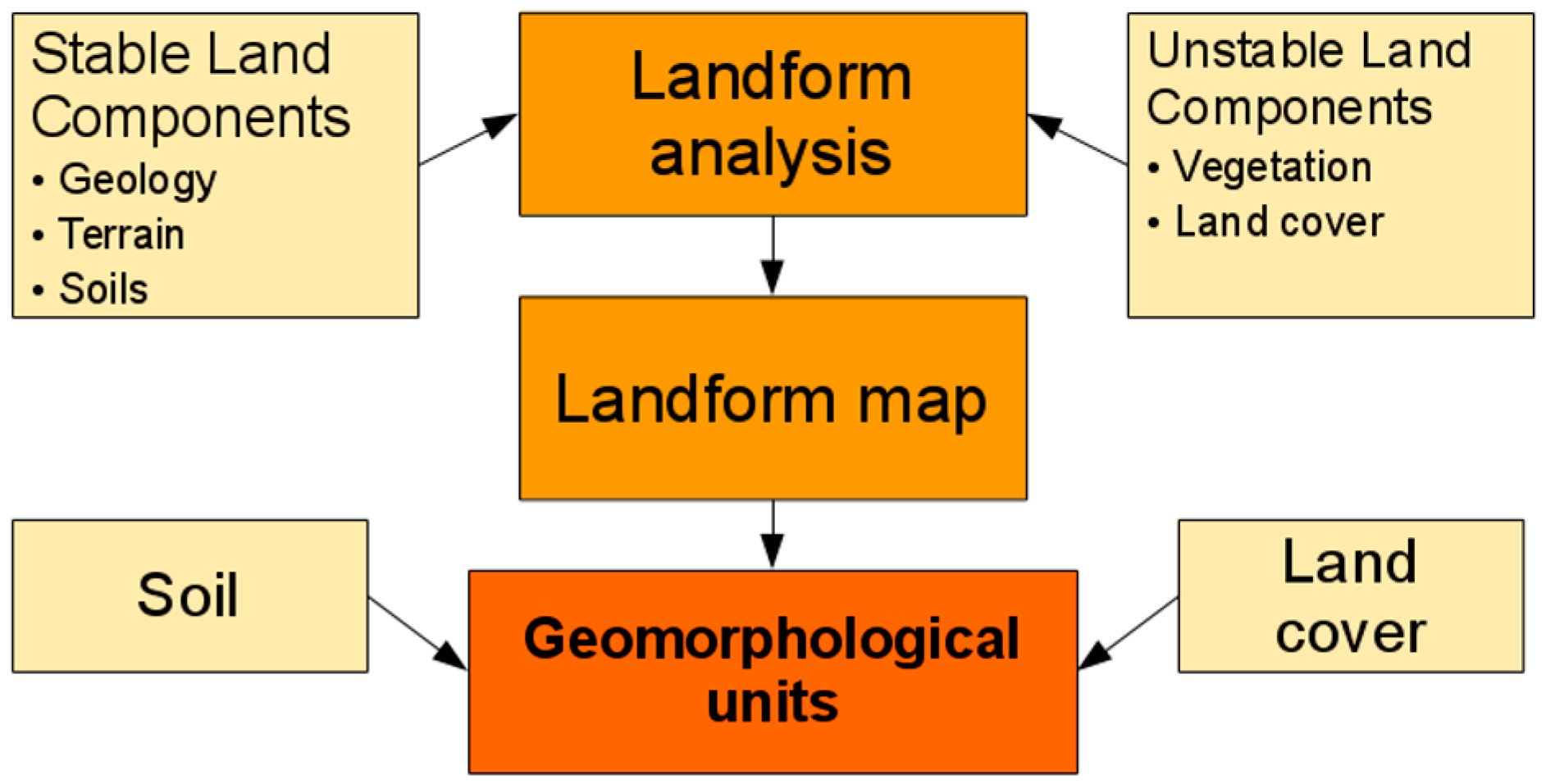
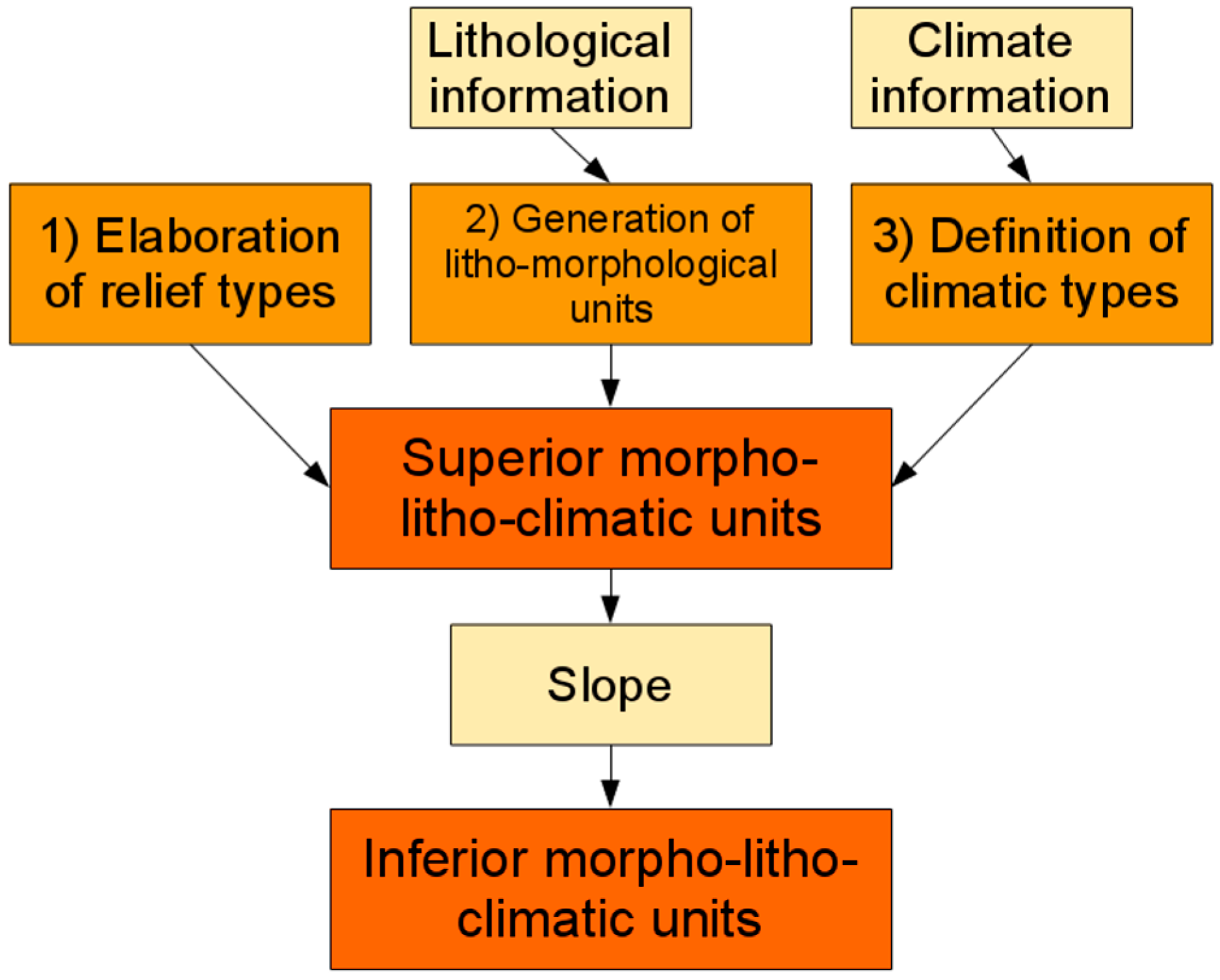
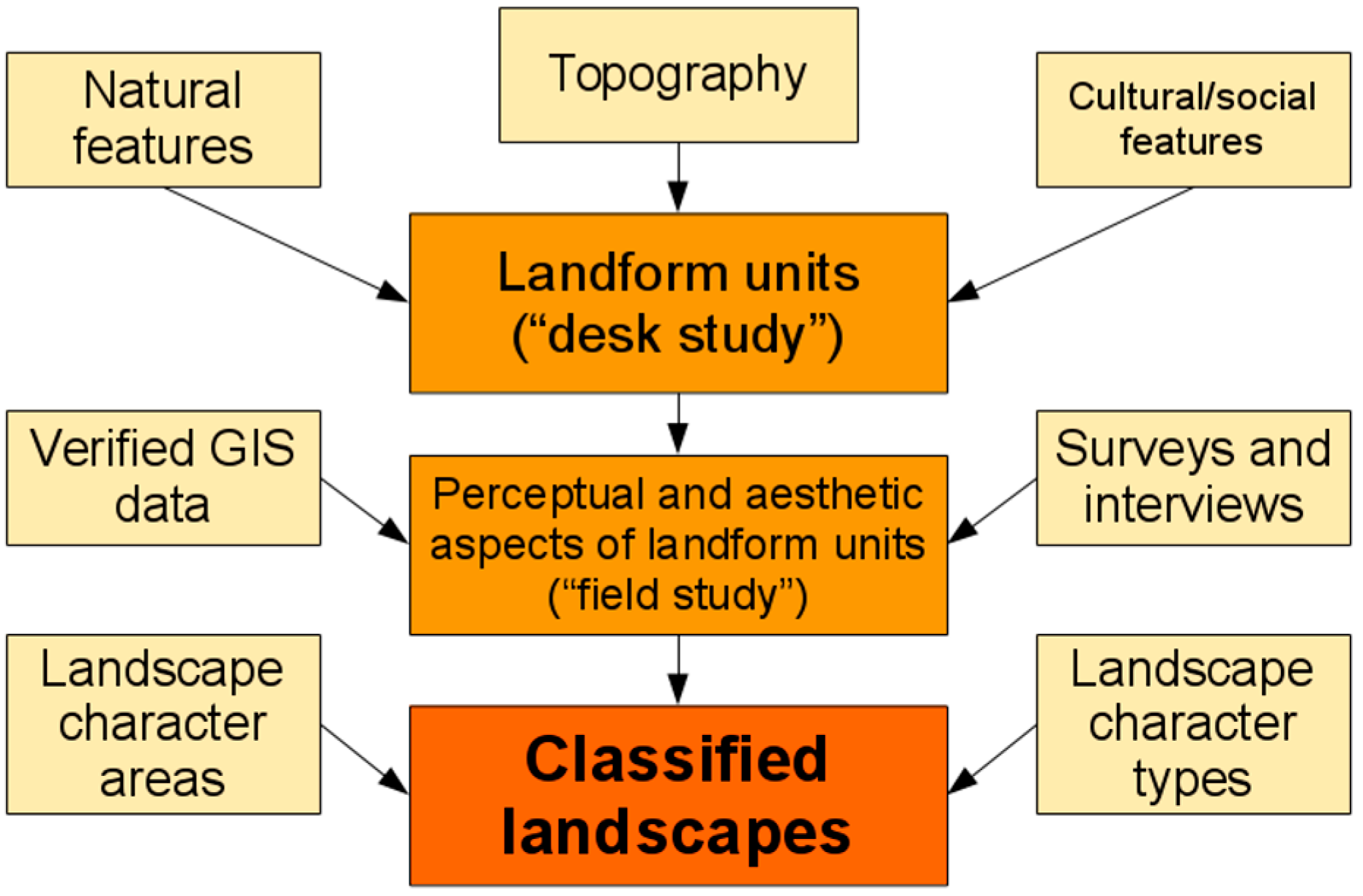
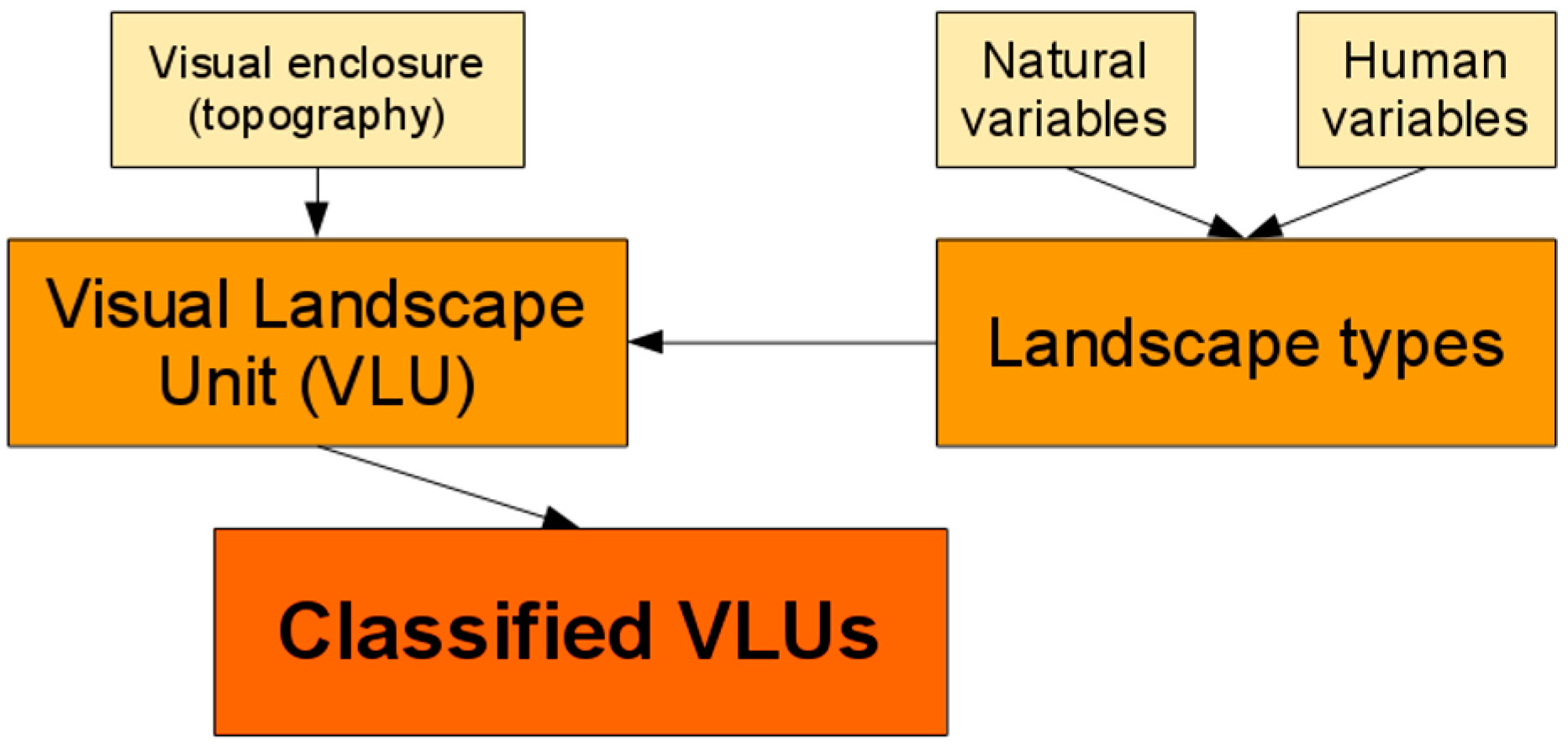
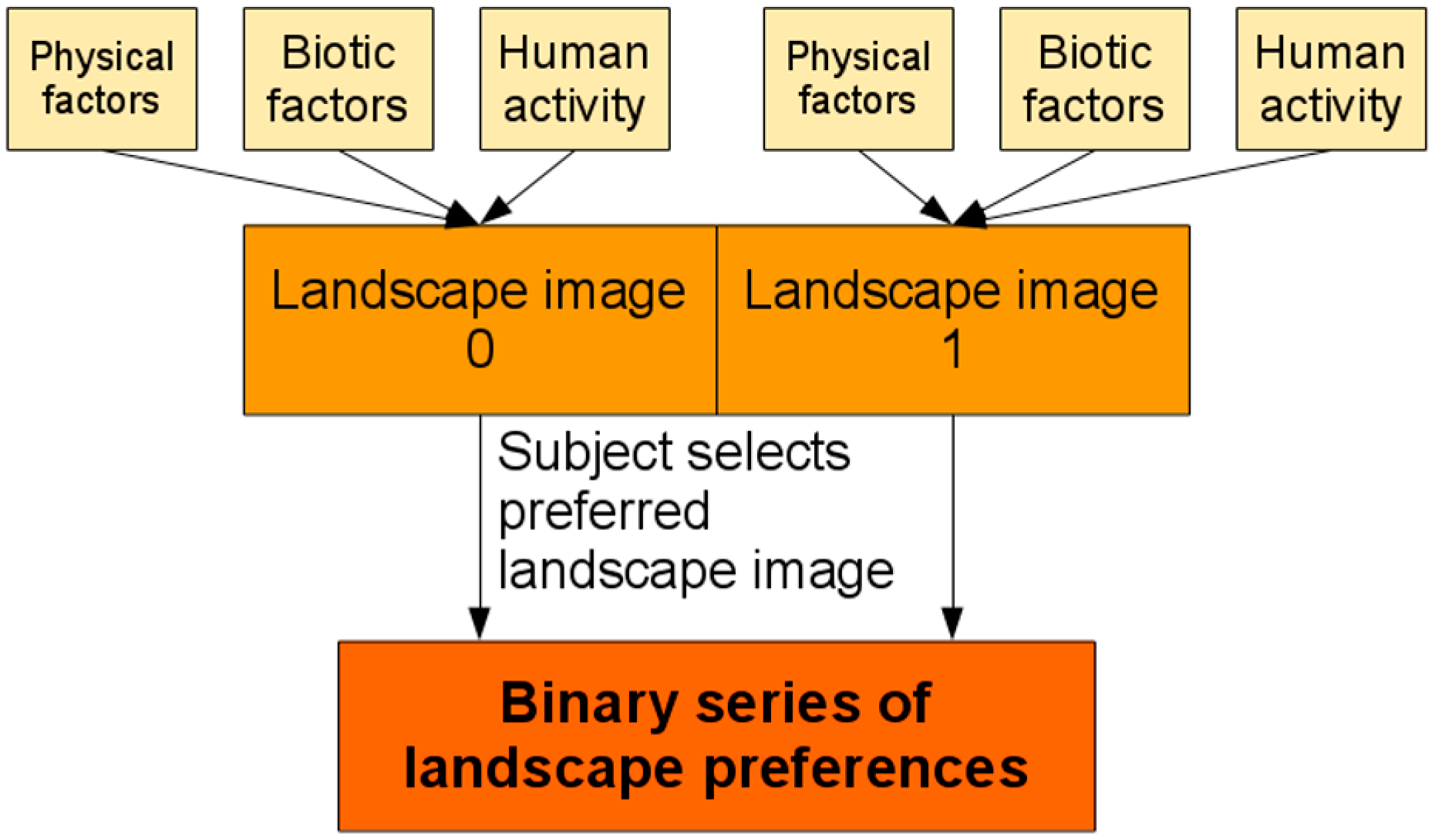
| Methodology | Conception of Landscape | Aspects of Physical Geography Considered | Social, Political, and Economic Factors Considered | Landscape Units Delineated | Scale |
|---|---|---|---|---|---|
| Geomorphological landscape maps based on landforms | Terrain features formed by natural processes which have a definable composition and range of physical and visual characteristics | Topographic relief, soil, hydrology, land cover and vegetation | No, but applied to evaluate economic possibilities | Geomorphological units | 1:25,000, 1:50,000 |
| Geosystemic landscape maps | It has a systemic and hierarchical character of the natural components, and a holistic perspective of the geographic space | Relief types, lithology, climate type | No, but applied to evaluate economic possibilities | Morpho-litho-climatic units | 1:50,000, 1:250,000 |
| Landscape Character Assessment | An area, as perceived by people, whose character is the result of the action and interaction of natural and/or human factors | Geology, land form, soil, vegetation, land cover, hydrology | Yes, “cultural and social factors”, settlement types, populations, demography, exploitation systems, historical context | Landscape character units (Landscape character types and areas) | Multiple |
| Landscape studies based on visual landscape units | An area, as perceived by people, whose character is the result of the action and interaction of natural and/or human factors | Topographic relief | Yes, landscape evaluation for planning, social assessment | Classified visual landscape units | 1:25,000 |
| Landscape assessment with the test of image pairs | On the one hand the image of a territory or phenosystem, and on the other the relations of interdependence of the components that make up that territory, or cryptosystem | Topography relief, hydrology, vegetation, land cover, climate, soil | Yes, universal, cultural, individual needs and preferences | Binary series of landscape preferences | Multiple |
© 2017 by the authors. Licensee MDPI, Basel, Switzerland. This article is an open access article distributed under the terms and conditions of the Creative Commons Attribution (CC BY) license (http://creativecommons.org/licenses/by/4.0/).
Share and Cite
Franch-Pardo, I.; Napoletano, B.M.; Bocco, G.; Barrasa, S.; Cancer-Pomar, L. The Role of Geographical Landscape Studies for Sustainable Territorial Planning. Sustainability 2017, 9, 2123. https://doi.org/10.3390/su9112123
Franch-Pardo I, Napoletano BM, Bocco G, Barrasa S, Cancer-Pomar L. The Role of Geographical Landscape Studies for Sustainable Territorial Planning. Sustainability. 2017; 9(11):2123. https://doi.org/10.3390/su9112123
Chicago/Turabian StyleFranch-Pardo, Iván, Brian M. Napoletano, Gerardo Bocco, Sara Barrasa, and Luis Cancer-Pomar. 2017. "The Role of Geographical Landscape Studies for Sustainable Territorial Planning" Sustainability 9, no. 11: 2123. https://doi.org/10.3390/su9112123
APA StyleFranch-Pardo, I., Napoletano, B. M., Bocco, G., Barrasa, S., & Cancer-Pomar, L. (2017). The Role of Geographical Landscape Studies for Sustainable Territorial Planning. Sustainability, 9(11), 2123. https://doi.org/10.3390/su9112123






